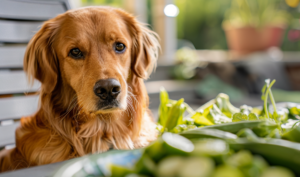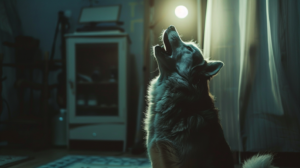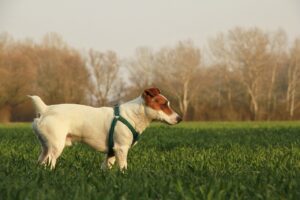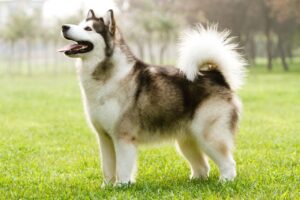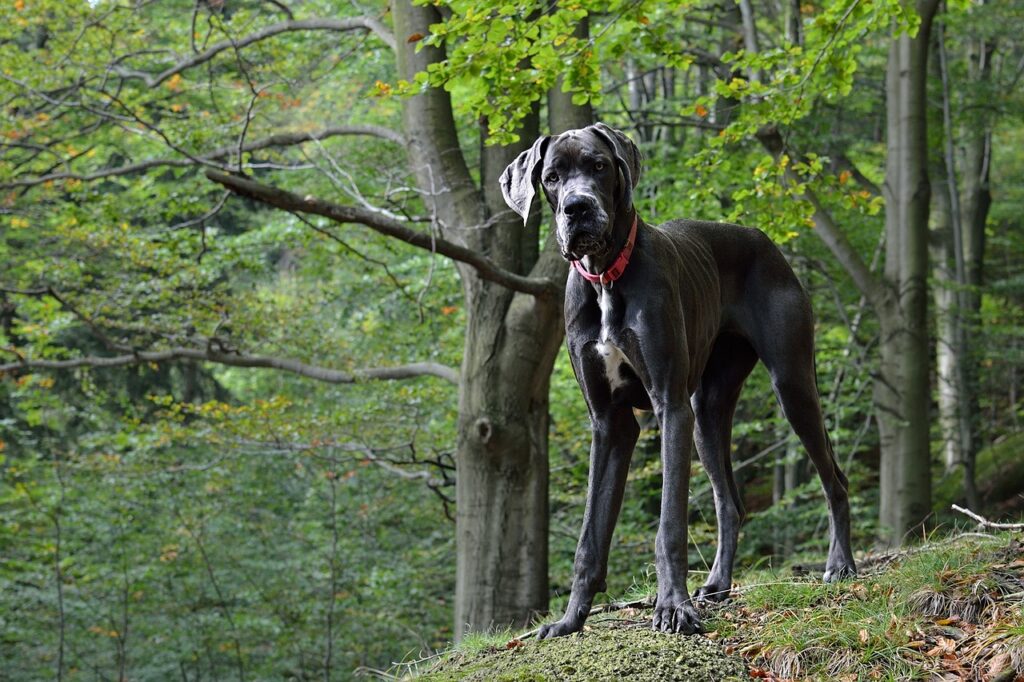
The Great Dane, a breed epitomizing elegance and strength, is renowned for its amiable nature and commanding presence. These impressive canines, often dubbed the ‘Apollo of Dogs,’ balance a formidable exterior with a heart full of affection and loyalty, making them perfect family pets and protective guardians.
In the familial and companionable culture of the Philippines, these adaptable dogs fit seamlessly with their friendly nature. Their patient demeanor with children and striking appearance, combined with their unique blend of might and grace, make them an ideal choice for those seeking an extraordinary companion.
This comprehensive guide gives you insights into the cost of owning a Great Dane, including the factors influencing its price and the yearly expenses involved. We’ll also guide you through identifying an authentic breed and locating a legitimate breeder. Additionally, we’ll delve into the pros and cons of owning a Great Dane and explore other breeds resembling this majestic canine.
How Much Does a Great Dane Cost in the Philippines?
A glance at local marketplaces reveals a diverse price range for these magnificent creatures. For instance, a glance at Sheryna.ph uncovers that Great Dane puppies can be priced between ₱15,000 and ₱40,000. However, prices can fluctuate based on several factors, including the pedigree, color, and even the breeder’s reputation.
While Great Danes come in various colors, certain hues are considered more desirable and thus command higher prices. The breed standard recognizes fawn, brindle, blue, black, harlequin, and mantle. Yet, it’s important to remember that the color of the coat does not affect the dog’s temperament or health.
There’s little differentiation apart from size and color regarding variations within the breed. However, prospective owners should be aware that there are American and European lines of Great Danes, with the latter tending to be larger and heavier. This difference in size might affect the price, with the European line Great Danes potentially costing more due to their size and rarity in the country.
Factors Affecting the Price
Delving into the factors that shape this investment can help prospective owners make an informed decision.
a. Breeder Reputation
First and foremost, the breeder’s reputation plays a significant role in determining the price of this breed. A well-respected breeder, known for their ethical practices, often commands a higher price for their pups than less established ones.
b. Lineage and Pedigree
The lineage of the puppy also contributes to its cost. Pups descending from award-winning or champion lines will likely be priced higher due to their desired qualities.
c. Location
Interestingly, the geographical location plays a part, too. Prices can vary depending on the demand and availability of these dogs in different regions.
d. Color and Appearance
Specific colors and patterns are more desirable and can attract a higher price. However, it’s crucial to note that color does not influence a dog’s health or temperament.
e. Training Costs
Training is another factor that can add to the initial cost. Puppy training classes are essential to ensure your pup grows into a well-behaved adult, and these sessions are usually separately priced.
f. Health of the Pup
Lastly, the health of the pup can influence its price. A healthy puppy from a litter that has been health tested will command a higher price due to the assurance of good health and lower vet bills in the future.
In conclusion, the price of a Great Dane puppy is shaped by multiple factors, each contributing to the overall investment. Awareness of these elements will allow potential owners to fully grasp the financial commitment and help them make a conscious decision when welcoming one into their home.
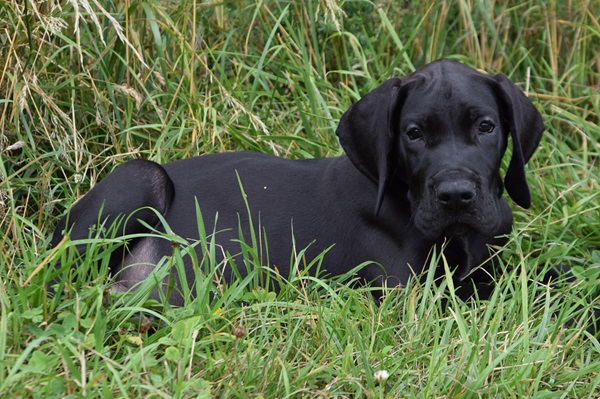
The Yearly Cost
It’s essential to grasp the financial implications, especially regarding the annual cost of owning a large breed such as a Great Dane.
1. Food
Depending on size, age, and activity, a large dog generally consumes 6 to 10 cups of premium dry food daily. With a daily intake of 8 cups or approximately 0.904 kilograms, the estimated monthly food requirement would be around 27 kilograms. In the Philippines, where dog food costs ₱200 per kilogram, the monthly food expense for owning a large breed dog is expected to be substantial, at about ₱5,400.
2. Veterinary Care
Large dogs require vaccinations, including key ones like DHLPP and Rabies and optional ones like Bordetella and Lyme disease. In the Philippines, the annual cost for these vaccines can reach up to ₱14,000, considering DHLPP at ₱1,200 to ₱1,500 per shot, Rabies vaccines around ₱500, and optional vaccines like Bordetella and Lyme from ₱800 to ₱1,000 each. Additionally, with regular vet visits for check-ups and preventative care costing approximately ₱500 to ₱1,000 per visit, the yearly veterinary expenditure for a large dog could easily exceed ₱20,000.
3. Grooming
While Great Danes aren’t high-maintenance in grooming, they still require regular care, including nail trims, ear cleaning, and occasional baths. On average, you might spend around ₱500 to ₱1,000 per month, adding up to ₱6,000 to ₱12,000 annually.
4. Miscellaneous Expenses
Lastly, there are expenses related to supplies and accessories, including leashes, collars, toys, and bedding. While these are primarily one-time costs, replacements, and additions could lead to an estimated annual expense of around ₱10,000.
The Yearly Expenses
Adding it all up, the annual cost of owning a Great Dane might range from ₱100,800 to ₱106,800. A substantial investment rewards you with a loyal, loving companion.
First Year Expenses
| Expense | Cost |
| Great Dane’s Price | ₱15,000 to ₱40,000 |
| Food | ₱64,800 |
| Veterinary Care | ₱20,000 |
| Grooming | ₱6,000 to ₱12,000 |
| Miscellaneous Expenses | ₱10,000 |
| TOTAL | ₱115,800 to ₱146,800 |
Understanding the various costs involved in owning this dog is crucial. It’s not just about purchasing the puppy; it’s about providing for its needs throughout life. As you contemplate welcoming a Great Dane into your home, remember these expenses to ensure you’re fully prepared for this rewarding commitment.
Spotting a Great Dane’s Distinct Physical Traits
In the bustling streets of Manila or the serene landscapes of Palawan, spotting a Great Dane is like witnessing a gentle giant’s stroll. Their towering height is the first giveaway – males stand at 30 to 32 inches, while females are slightly shorter at 28 to 30 inches.
- Unmistakable Stature: This breed’s grand size is its most distinguished trait. With a muscular body that exudes strength and elegance, their presence is hard to overlook.
- Expressive Eyes: Their eyes are medium-sized, almond-shaped, and come in various colors. Their gaze is often described as friendly and alert.
- Unique Coat: They have short and thick coats in several colors and patterns, including fawn, brindle, blue, black, harlequin, and mantle.
- Square Proportions: A purebred maintains a square proportion – their height at the withers is almost identical to the body’s length from shoulder to buttock.
- High-set Ears: While traditionally cropped to stand erect, their natural ears are high-set, medium-sized, and fold forward close to the cheek.
Understanding these physical traits can help prospective owners discern an authentic breed, ensuring they welcome a true gentle giant into their homes.
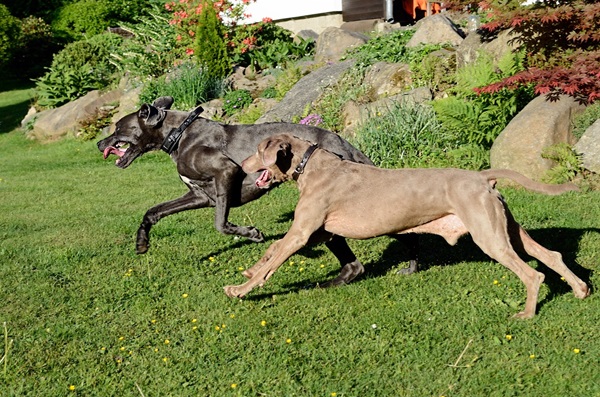
Questions to Ask Your Breeder
In the quest for a loyal canine companion, one breed stands tall – quite literally – the Great Dane. This gentle giant, revered for its imposing stature and remarkable temperament, is a sight to behold in the Philippines’ diverse landscapes. But how does one ensure the authenticity of such a majestic breed? An essential step lies in asking your breeder the right questions.
- Meet the Parents: Requesting to meet the sire and dam provides insight into the puppy’s potential size, temperament, and health. It’s like peeking into the future of your prospective pet.
- Health Checks: Inquire about health tests performed on the parents. Great Danes are prone to certain genetic conditions, so breeders must undertake due diligence with health screenings.
- Breeding Experience: The breeder’s experience often reflects their knowledge and commitment to ethical practices. A seasoned breeder understands the nuances of nurturing this unique breed.
- Socialization Practices: Early socialization shapes a puppy’s adult personality. Understanding the breeder’s approach can offer a glimpse into your future pet’s behavior.
- Health Certificates Verification: Request to see health certificates. Ideally endorsed by recognized bodies like the Philippine Canine Club, Inc. (PCCI), these documents attest to the puppy’s health and lineage, ensuring you bring home a genuine Great Dane.
- Temperament of Parents: Since temperament can be hereditary, understanding the demeanor of the puppy’s parents can help predict the pup’s future behavior.
- Litter Inspection: Observing the entire litter allows you to gauge the overall health and behavior of the puppies, offering another layer of assurance about your chosen pet.
The journey towards pet ownership is filled with anticipation and excitement. However, it’s vital to tread cautiously, ensuring that the towering furball trotting beside you is indeed a purebred Great Dane. By asking these key questions, you’re not just buying a pet but investing in a lifetime of companionship.
Weighing the Pros and Cons of Owning a Great Dane
Welcoming this gentle giant into your home, especially within the tropical confines of the Philippines, it’s essential to weigh the pros and cons.
The Upsides
- Remarkable Companions: Despite their size, these dogs are known for their gentle demeanor, earning them the title ‘gentle giants.’ They’re great with kids and generally get along well with other pets.
- Intimidation Factor: Their sheer size makes them excellent deterrents for unwanted visitors. However, they’re typically friendly and welcoming, making them less suitable as guard dogs.
- Low Grooming Needs: Their short coats require minimal grooming, an advantage in the hot and humid Philippine climate.
- Easy to Train: These dogs are intelligent and eager to please, making training relatively straightforward. Early socialization and consistent exercise are vital to nurturing a well-behaved adult dog.
The Downsides
- Space Requirements: These dogs need space to move around comfortably. Cramped apartments might not be the best environment for them.
- Health Concerns: Like many large breeds, they’re prone to specific health issues, such as hip dysplasia and heart disease. Regular vet checks and a good diet are crucial.
- Short Lifespan: The average lifespan of these giants is around 8-10 years. While every moment with them is a joy, their time with us is tragically brief.
- Heat Sensitivity: The tropical climate might be a bit harsh for these majestic creatures. It is essential to provide a cool, shaded area and plenty of water to keep them comfortable.
Owning a dog is a commitment that spans years, shaping the rhythm of daily life. When it comes to the Great Dane, this commitment takes on a whole new dimension, given their size and unique needs. However, the joy of sharing your life with such a gentle, loving giant is unparalleled. It’s about understanding the challenges, embracing the rewards, and creating a nurturing environment where you and your pet thrive.
Exploring Similar Breeds
In the realm of towering, gentle giants, the Great Dane often takes center stage. However, other breeds share similar qualities, offering potential pet owners a broader canvas.
1. The Irish Wolfhound: This breed is renowned for its size and strength, much like the Great Dane. Despite their imposing stature, they are known for their calm demeanor and friendliness, making them excellent companions. Though their rough coat requires regular grooming, it adds to their charm and allure.
2. The English Mastiff: Known for their robust build and impressive size, the English Mastiff shares our gentle giant’s commanding presence. However, beneath their formidable exterior lies a gentle and affectionate temperament. They are loyal companions, protective yet friendly.
3. The Newfoundland: This breed is a bundle of joy packaged in a large, bear-like body. Renowned for their swimming skills, these dogs are perfect for those who enjoy outdoor escapades. Their patient, gentle nature makes them great family pets.
4. Saint Bernard: Saint Bernards are gentle giants, too, displaying warmth, friendliness, and a solid physical presence. Their calm and patient demeanor makes them as excellent with families as well. Despite their size, both breeds have surprising agility and need regular exercise. Learn more about the price of a Saint Bernard in the Philippines.
5. The Alaskan Malamute: Much like the Great Dane, Alaskan Malamutes are robust, resilient, affectionate, and playful. Their wolf-like appearance and curled tail make them as striking as they are endearing. They require exercise and grooming but are rewarded with deep devotion and a spirit of adventure.
Choosing a pet is more than just selecting a breed; it’s about welcoming a new member into the family. While the Great Dane is a fantastic choice, exploring other similar breeds opens up possibilities, ensuring you find the perfect companion to share your life with.

